12 Astounding Flowers That Start with A + Growing Guide Charts

This post follows our research editorial guidelines.

I admire the adorable and astounding wildflowers around my area. I love their astonishing ability to attract pollinators, in addition to their alluring aspects and which always amuse.

I’m amassing an array of my most appreciated flowers that start with letters, ambling along through the alphabet.
Let’s start with all the amazing flowers that begin with the letter ‘A’.
Table of Contents
1. Alyssum (Alyssum maritimum)

Low and lovely, the Alyssium is a creeping ground cover known for tiny clusters of sweet, four-petalled flowers in just about every color you can imagine.
They are quite fragrant for such small blossoms and are known to bloom so thickly that the leaves are hidden behind a dense layer of lovely flowers. It’s a great choice for pollinator gardens, as it is known to bloom all year round in the right conditions.
| Botanical Name: | Alyssum maritimum |
| Growth Rate: | Moderate |
| Native Range: | Mediterranean, Canary Islands, Azores |
| Hardiness Zones: | Moderately moist well-draining soils |
| Soil Needs: | Moderately moist well draining soils |
| Exposure: | Full sun to partial shade |
| Blooming Period: | Spring through fall, all year in warm conditions |
| Water needs: | Low to moderate; drought resistant when established |
2. Aster (Asteraceae spp.)

Asters are a big group of friendly flowers, with wide round daisy-like blossoms in an array of different colors. Indeed, many popular plants we call daisies are a form of aster, and there’s a species or cultivar for just about any condition.
| Botanical Name: | Asteraceae spp. |
| Growth Rate: | Moderate |
| Native Range: | Europe and Asia |
| Hardiness Zones: | 4a to 8b |
| Soil Needs: | Organically rich loam or clay soils |
| Exposure: | Full sun to partial shade |
| Blooming Period: | Summer to fall |
| Water needs: | Moderate; some cultivars are drought resistant |
3. Amaryllis (Hippeastrum spp.)
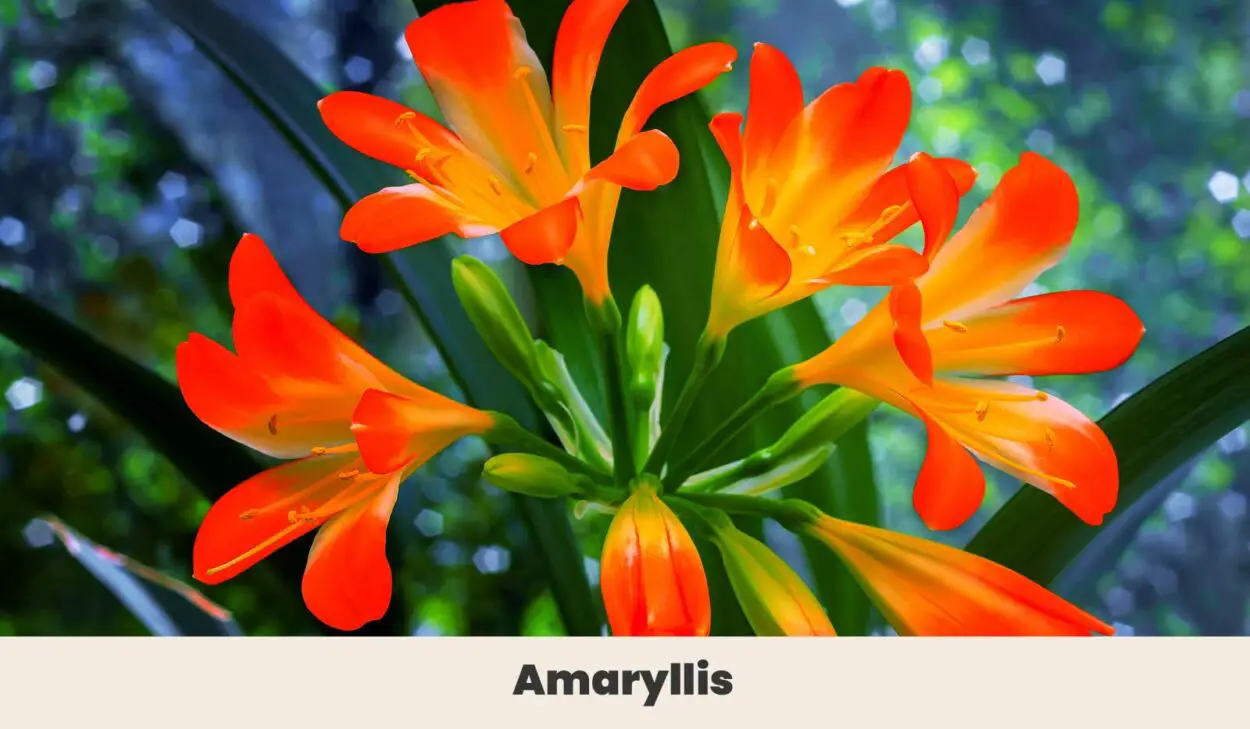
Sun-loving amaryllis is the first sign of spring for many gardeners. They grow from a bulb and are often ‘forced’ through the winter indoors in vases of water for a showy burst of winter color.
Most are hybrids of African, American, and even Dutch cultivars, chosen to bloom reliably and thrive just as well indoors as outside in warmer areas.
| Botanical Name: | Hippeastrum spp. |
| Growth Rate: | Moderate |
| Native Range: | Some risk of red Bloch |
| Hardiness Zones: | 7a to 10b |
| Soil Needs: | Moist, organically rich soil with good drainage. |
| Exposure: | Full sun to partial shade |
| Blooming Period: | Bulbs can be forced, 4-6 weeks from dormancy |
| Water needs: | Moderate |
4. Anemone (Anemone spp.)
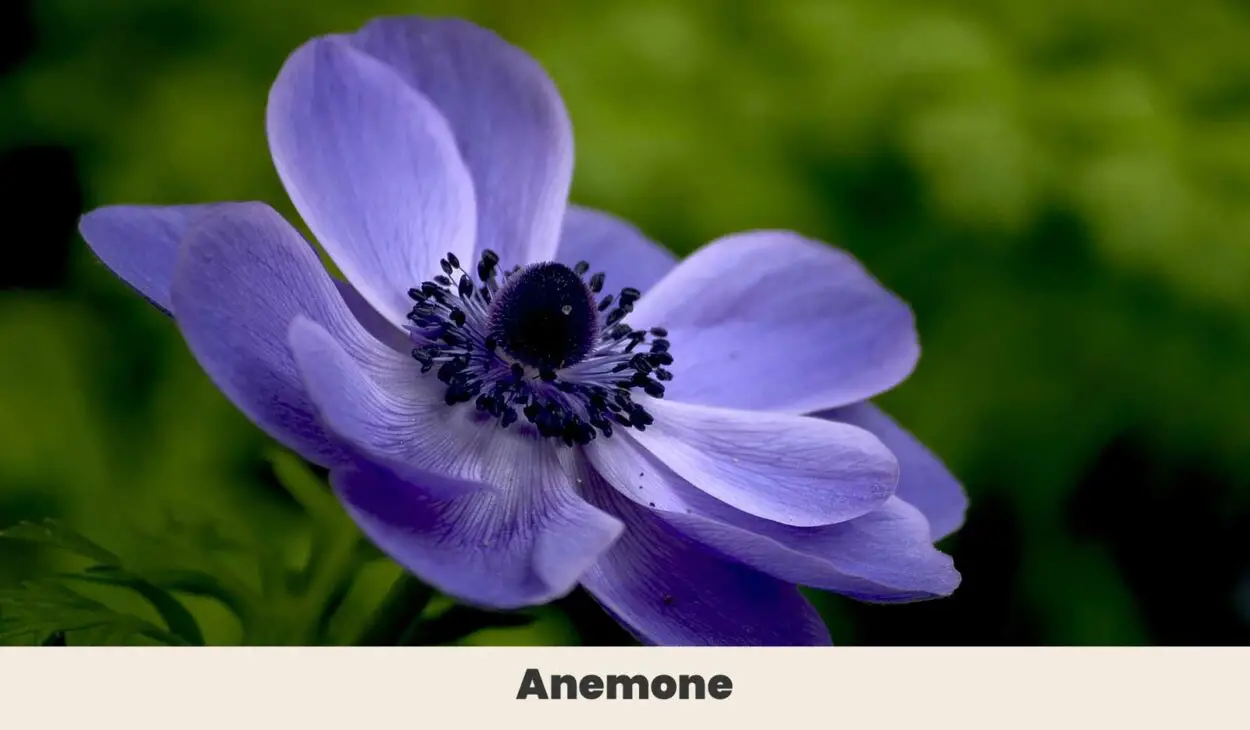
Also evocatively known as windflowers, anemones are showy bloomers with wide, cup-shaped flowers in red, pink, yellow, purple, blue, or white. They are so well loved and widespread that it’s hard to tell where their native range even is anymore, with species found from North and South America through Russia and Central Asia, and North Africa.
| Botanical Name: | Anemone spp. |
| Growth Rate: | Slow |
| Native Range: | The Americas, Russia, Central Asia, North Africa |
| Hardiness Zones: | 4a to 9b |
| Soil Needs: | Fertilize seasonally with balanced slow-release granules |
| Exposure: | Full sun to partial shade |
| Blooming Period: | Spring to Fall |
| Water needs: | Moderate |
5. Allium (Allium spp.)
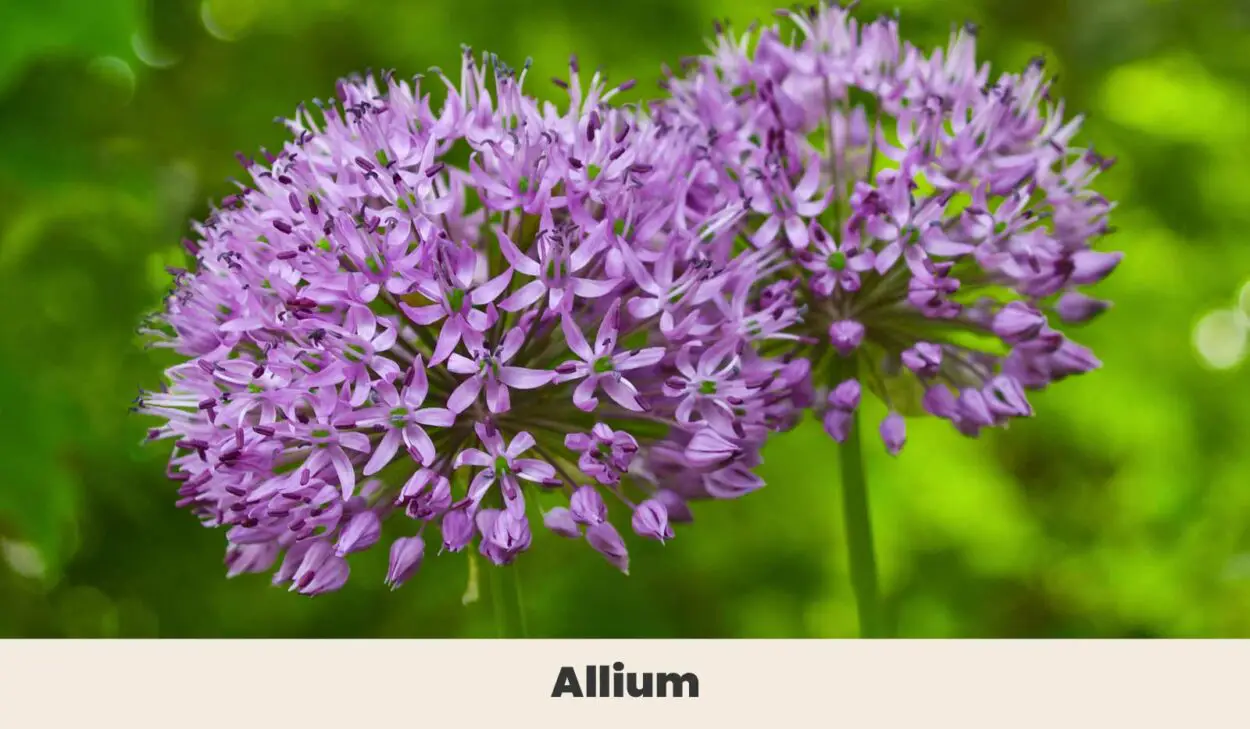
There are over 700 species of alliums, with the most popular by far being the common onion. But the family has a few beautiful members in addition to the practical ones, known for striking spherical blooms.
Most ornamental alliums produce tall clusters of almost perfectly round purple displays atop a tall elegant stem, though some have yellow or white flowers instead.
| Botanical Name: | Allium spp. |
| Growth Rate: | Medium |
| Native Range: | Grows well in full sun |
| Hardiness Zones: | 4a to 9b |
| Soil Needs: | Organically rich, loamy soil. Tolerates sandy soils. |
| Exposure: | Grows well in full-sun |
| Blooming Period: | Late spring to early summer |
| Water needs: | Low to moderate; drought resistant when established |
6. African Daisy (Osteospermum spp.)

If you’re after an easy-to-grow plant with almost psychedelic flowers, then the African daisy is a great choice. Its flowers range from gentle pastels to shocking fluorescent hues that are so bright they practically grow.
Some cultivars even have folded or curled petals for an extra bit of oomph. They like warm weather but grow well as a container plant.
| Botanical Name: | Osteospermum spp. |
| Growth Rate: | Medium |
| Native Range: | Africa and the Arabian peninsula |
| Hardiness Zones: | 10 to 11 |
| Soil Needs: | Moist, organically rich soils with good drainage |
| Exposure: | Full |
| Blooming Period: | Spring to fall |
| Water needs: | Moderate; drought resistant once established |
7. Azalea (Rhododendron spp.)

There’s few flowers that bloom as brightly and luxuriously as the azalea. Technically a type of rhododendron, they are typically smaller with finer, more delicate leaves.
There are over 800 different species with a variety of needs and flowers that range from hot pink to white to multicolored blooms with petals that show more than one color.
| Botanical Name: | Rhododendron spp. |
| Growth Rate: | Slow |
| Native Range: | Asia, North America, Europe |
| Hardiness Zones: | 6 to 8 |
| Soil Needs: | Organically rich, moist soils with good drainage |
| Exposure: | Full sun to partial shade |
| Blooming Period: | Spring to fall |
| Water needs: | Moderate |
8. Aquilegia (Aquilegia canadensis)
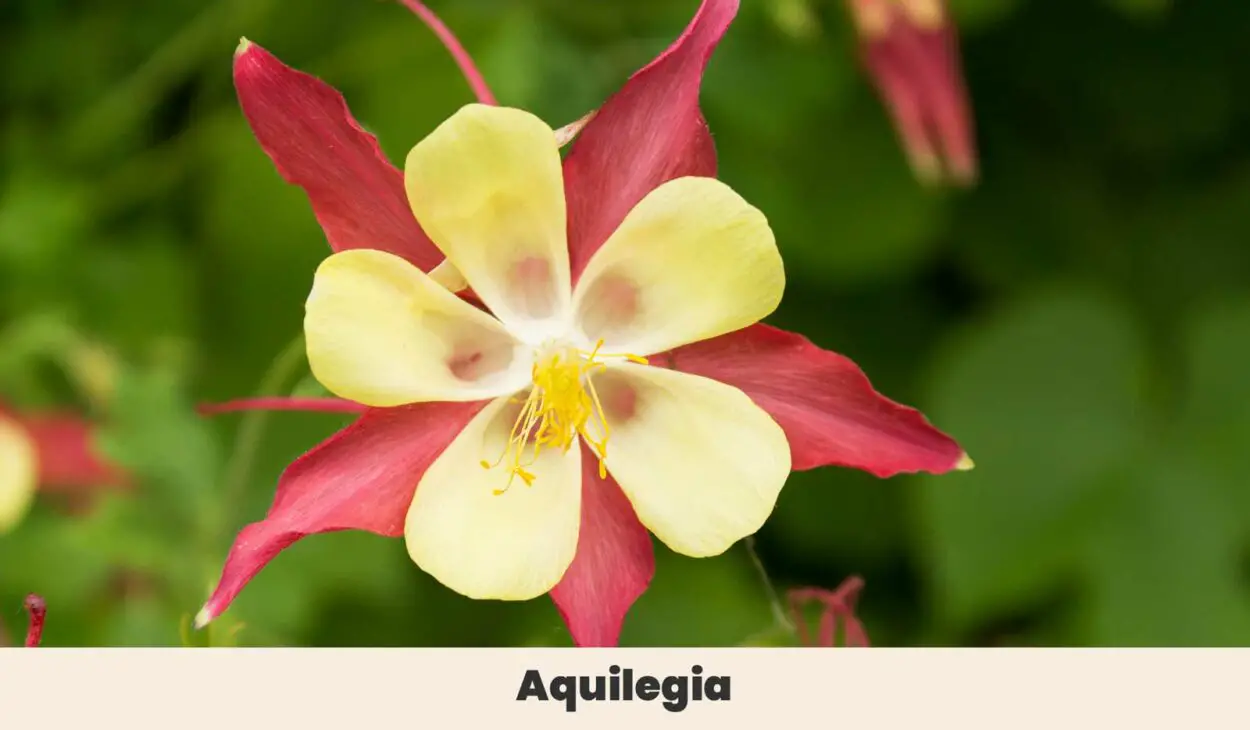
Also known as the red columbine, rock bells, or Jack-in-Trousers, the aquilegia is an American wildflower known for its drooping, bell-shaped flowers. They blaze a brilliant scarlet tipped in yellow and are frequently visited by hummingbirds, butterflies, and bees.
They’re a good choice for wildflower gardens where they serve as a charming ground cover when not in bloom.
| Botanical Name: | Aquilegia canadensis |
| Growth Rate: | Moderate |
| Native Range: | North America |
| Hardiness Zones: | 3a to 8b |
| Soil Needs: | Tolerates most soils |
| Exposure: | Full sun to partial shade |
| Blooming Period: | Spring |
| Water needs: | Low to moderate |
9. Agapanthus (Agapanthus orientalis)

Agapanthus produce tall, spectacular displays of purple perennial flowers, with many delicate lily-like blooms erupting in football-sized groups on stems upwards of four feet high.
They don’t have much fragrance but the sheer number of blossoms more than makes up for this minor flaw. Be warned they self-seed readily and can take over a bed if left undisturbed.
| Botanical Name: | Agapanthus orientalis |
| Growth Rate: | Moderate |
| Native Range: | South Africa |
| Hardiness Zones: | 9 to 11 |
| Soil Needs: | Tolerates most soils |
| Exposure: | Partial shade |
| Blooming Period: | Summer |
| Water needs: | Low to moderate; drought resistant once established |
10. Angelica (Angelica archangelica)
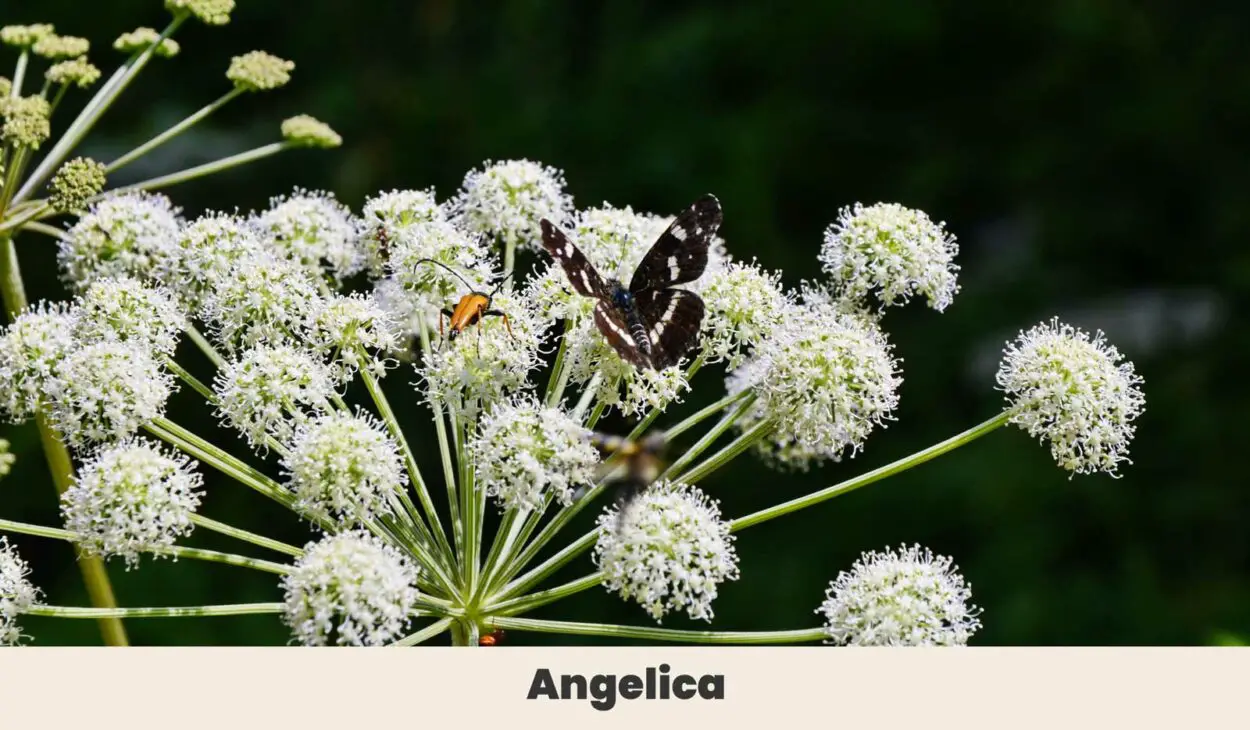
So valued is the herb Angelica that it’s said the secret of its use was revealed by an angel. It has a warm, sweet flavor akin to licorice, and has long served as both a culinary herb and a medicine. It’s a relative of the carrot and has the same delicate, frothy white blooms.
| Botanical Name: | Angelica archangelica |
| Growth Rate: | Moderate |
| Native Range: | Northern Europe |
| Hardiness Zones: | 5a to 8b |
| Soil Needs: | Tolerates clay, loam and sandy soils |
| Exposure: | Full sun to partial shade |
| Blooming Period: | Summer |
| Water needs: | Moderate to high |
11. Abutilon (Abutilon spp.)

Abutilon is also known as the parlor maple, Chinese bellflower, or flowering maple. They are a group of evergreen shrubs containing 200 different species with a cultivar to suit most conditions.
They range in height from a foot or two right up to towering 10-foot bushes. Their flowers hang bell-like from the tips of the branches, in fetching shades of pink, orange, yellow, and peach.
| Botanical Name: | Abutilon spp. |
| Growth Rate: | Fast |
| Native Range: | Tropical regions worldwide |
| Hardiness Zones: | 9 to 11 |
| Soil Needs: | Tolerates most soil |
| Exposure: | Full sun to partial shade |
| Blooming Period: | Summer and fall |
| Water needs: | Moderate |
12. Achillea (Achillea millefolium)

For a hardy meadow wildflower, it’s hard to go past Achillea. Also known as Yarrow or Dog Fennel, it grows well on open ground and can be used as a lawn substitute in low-traffic areas.
Achillea is one of my favorite red flowering perennials, producing dense clusters of flowers atop swaying stems. Other varieties of this flower range in color from white and yellow to pink and purple.
| Botanical Name: | Achillea millefolium |
| Growth Rate: | Slow to moderate |
| Native Range: | Europe, Western Asia |
| Hardiness Zones: | 3a to 9b |
| Soil Needs: | Well-draining loam or sand with abundant organic matter |
| Exposure: | Full sun |
| Blooming Period: | Summer |
| Water needs: | Low to moderate |
Final thoughts
Any addition to your allotment is aspirational and admirable. Augmenting the area in alluring and appealing arrays arouses affection and ardent admiration. New flowers arrive annually to adorn all around. Amazing!
